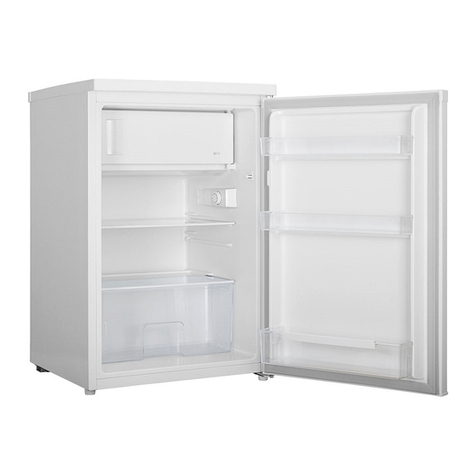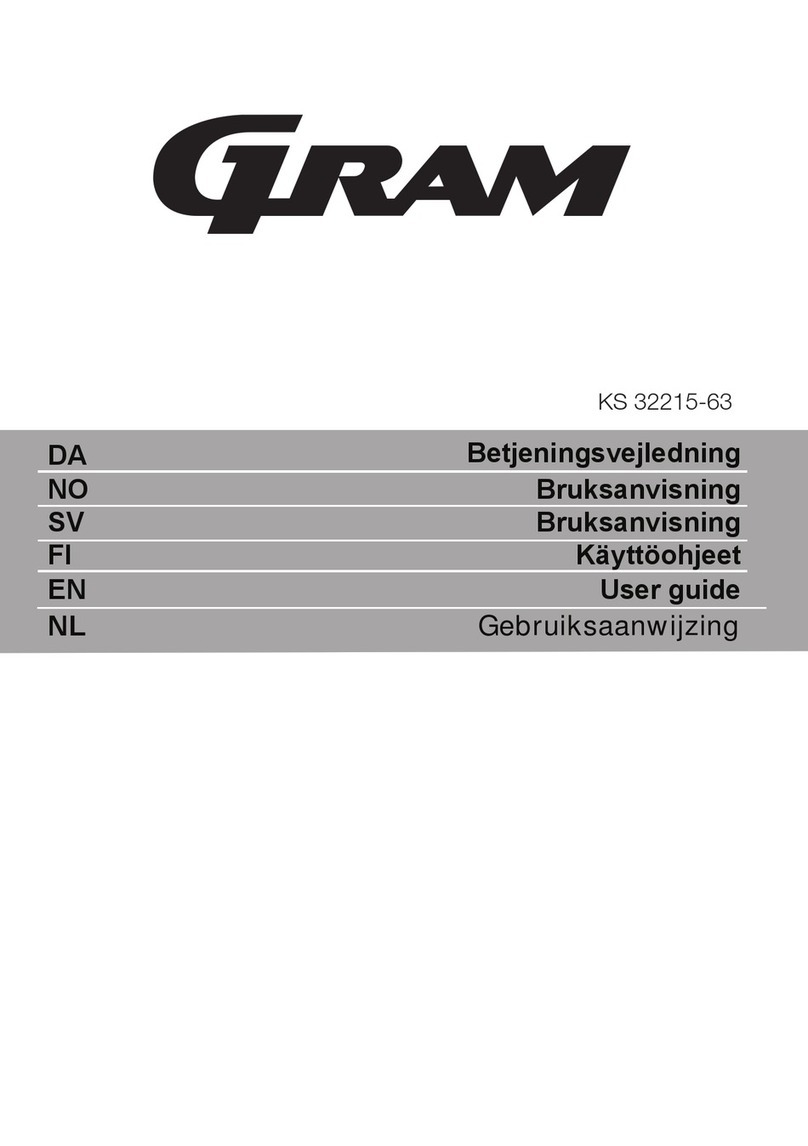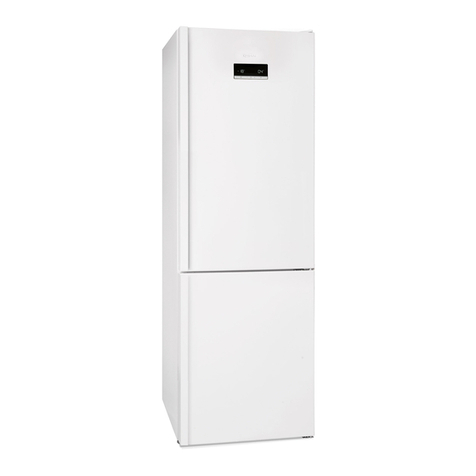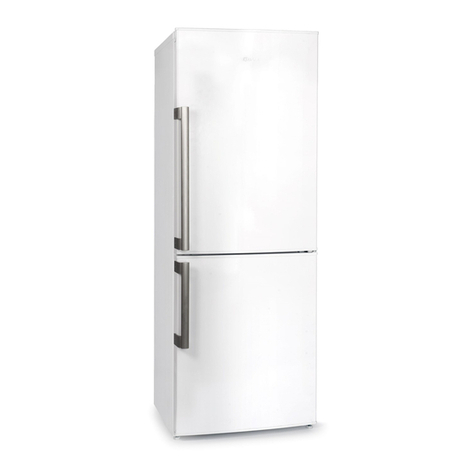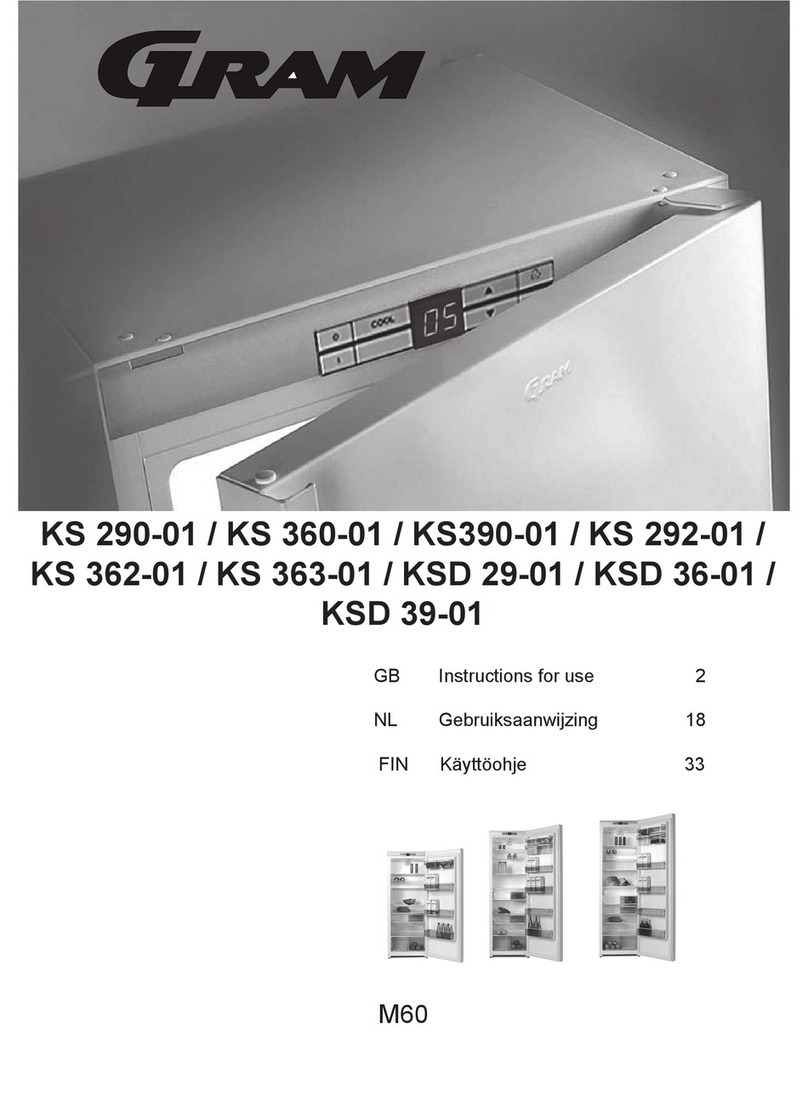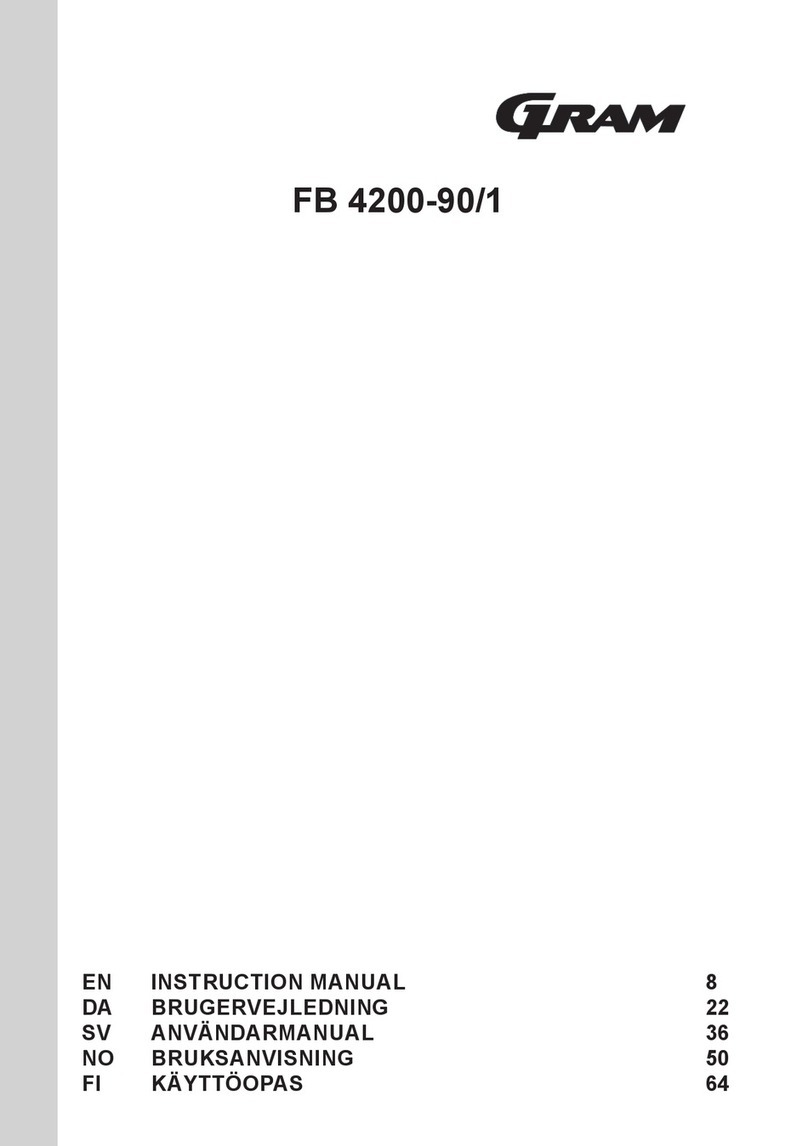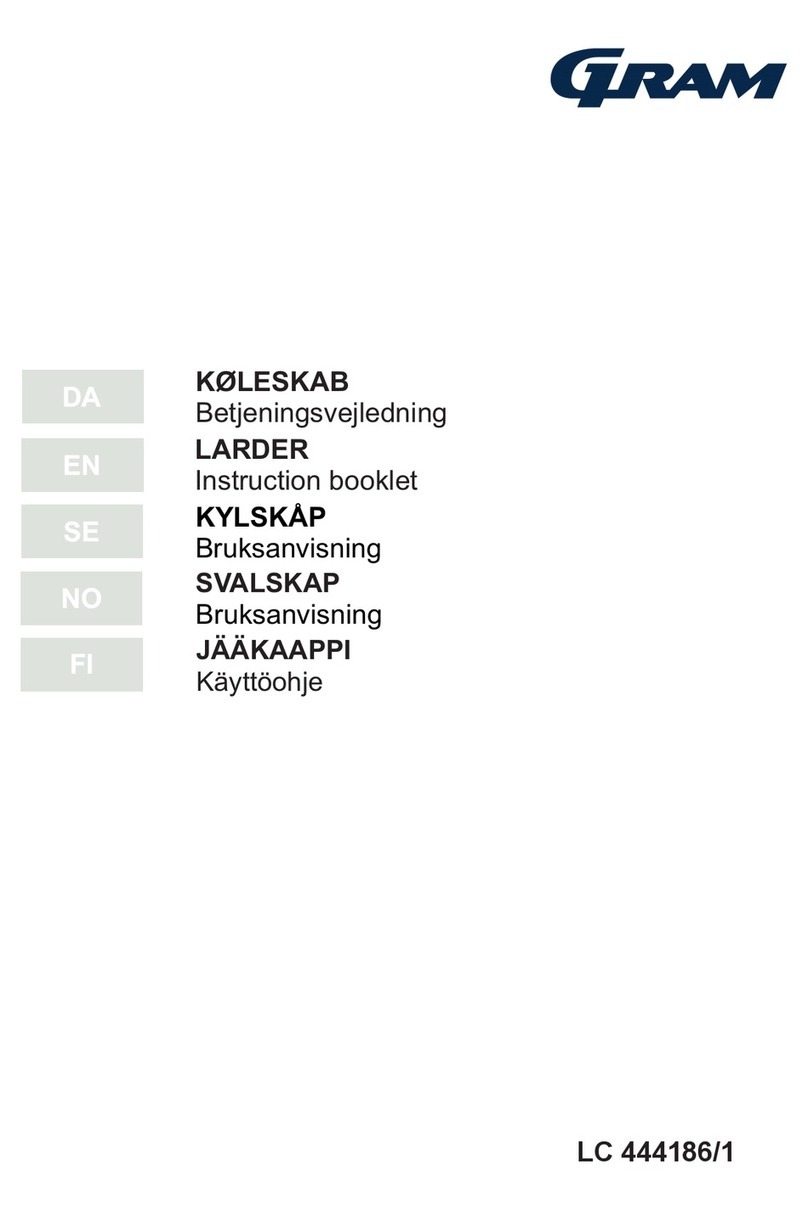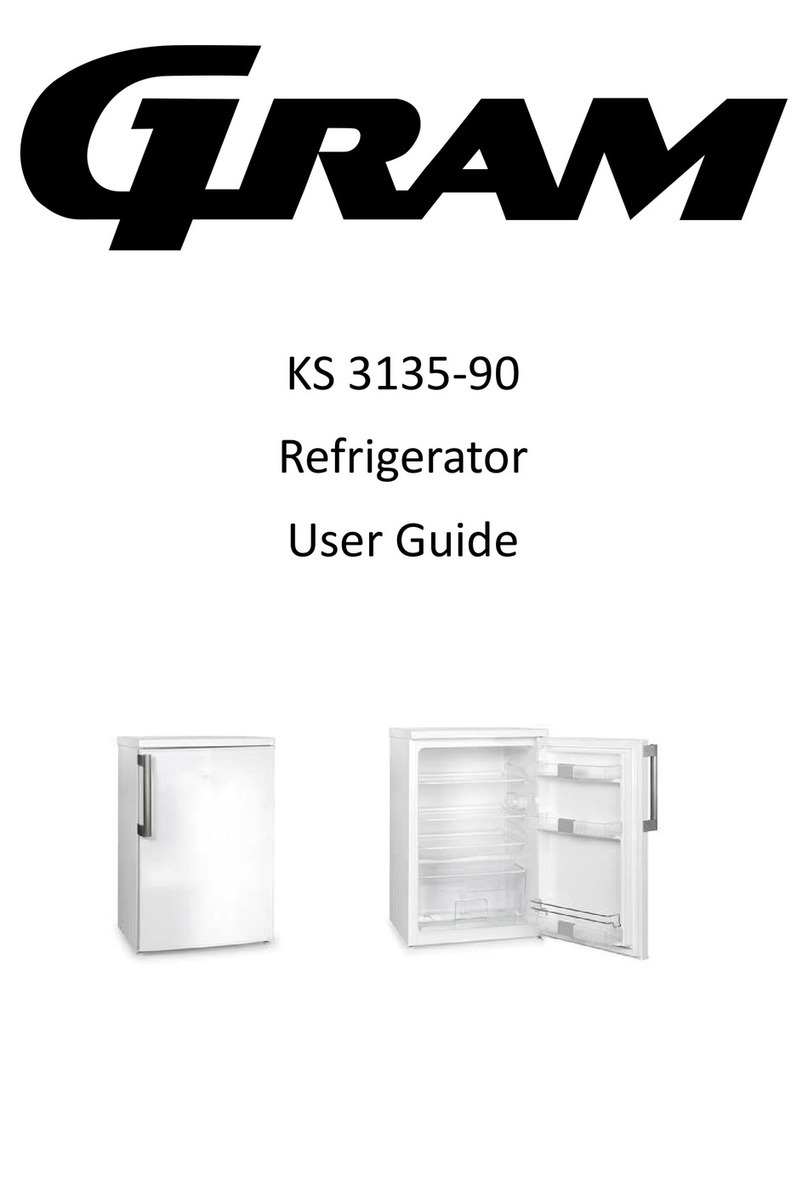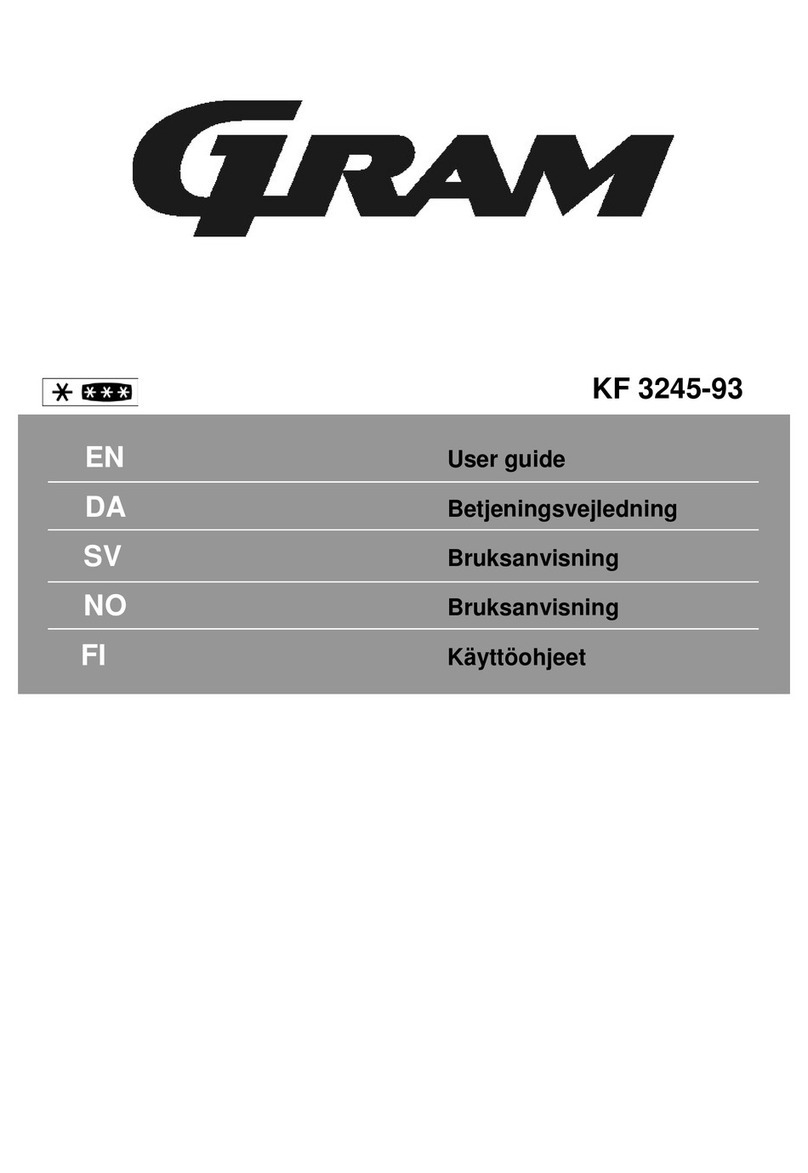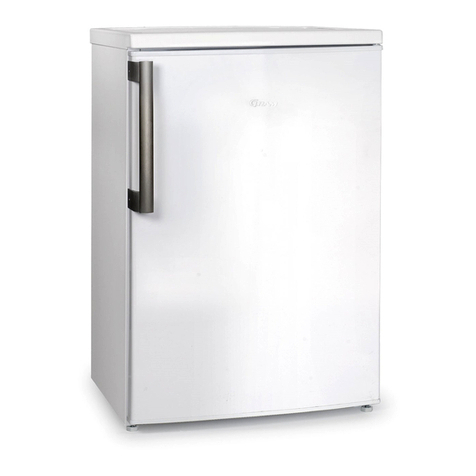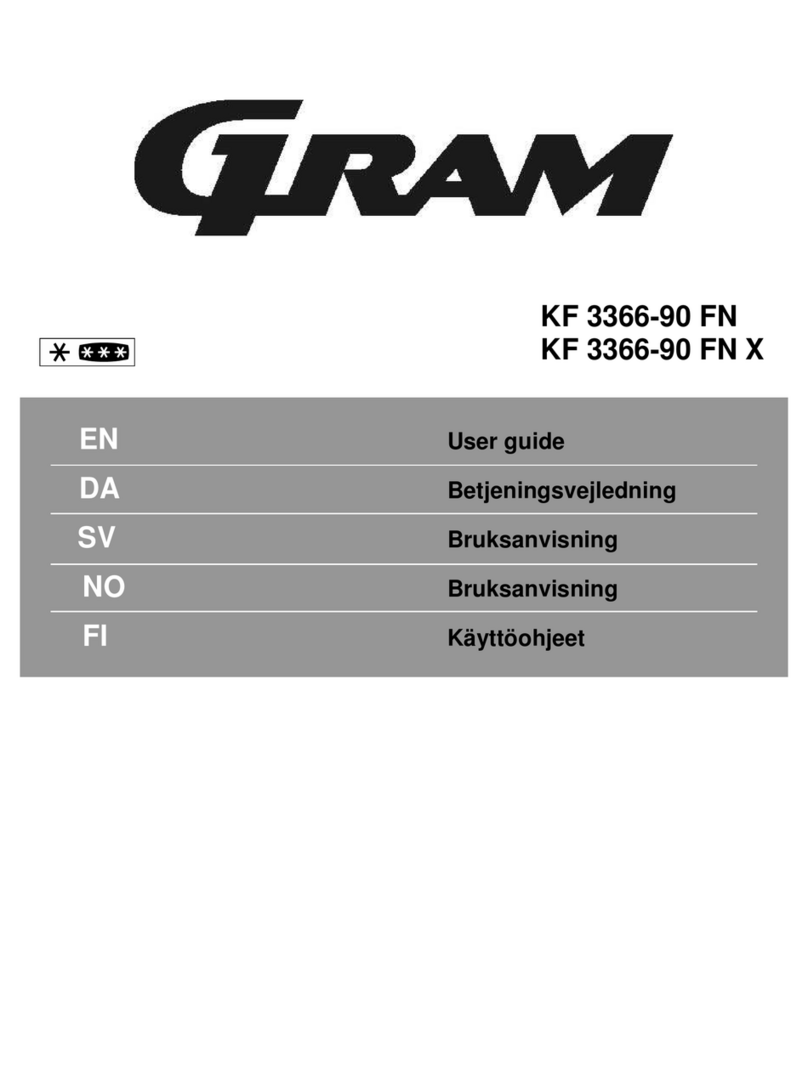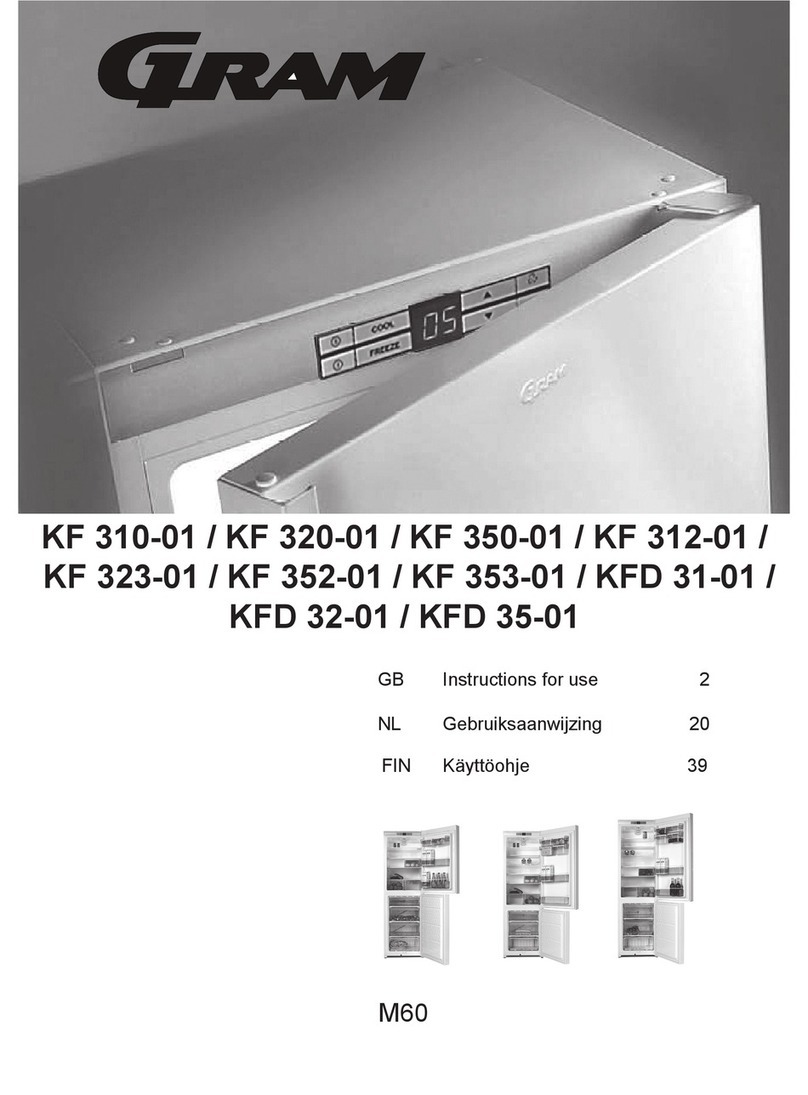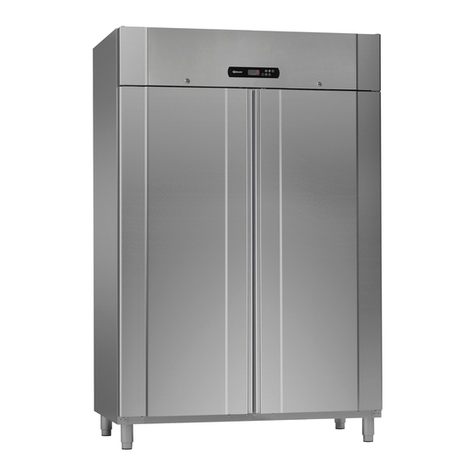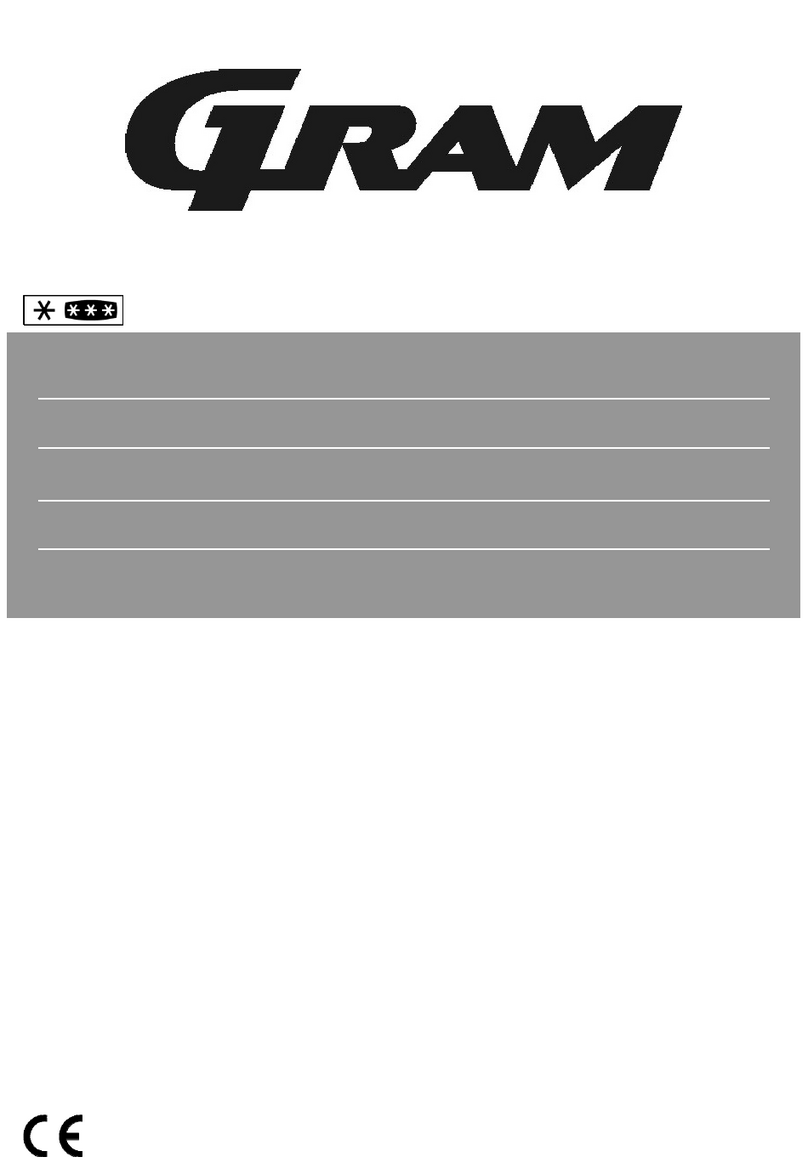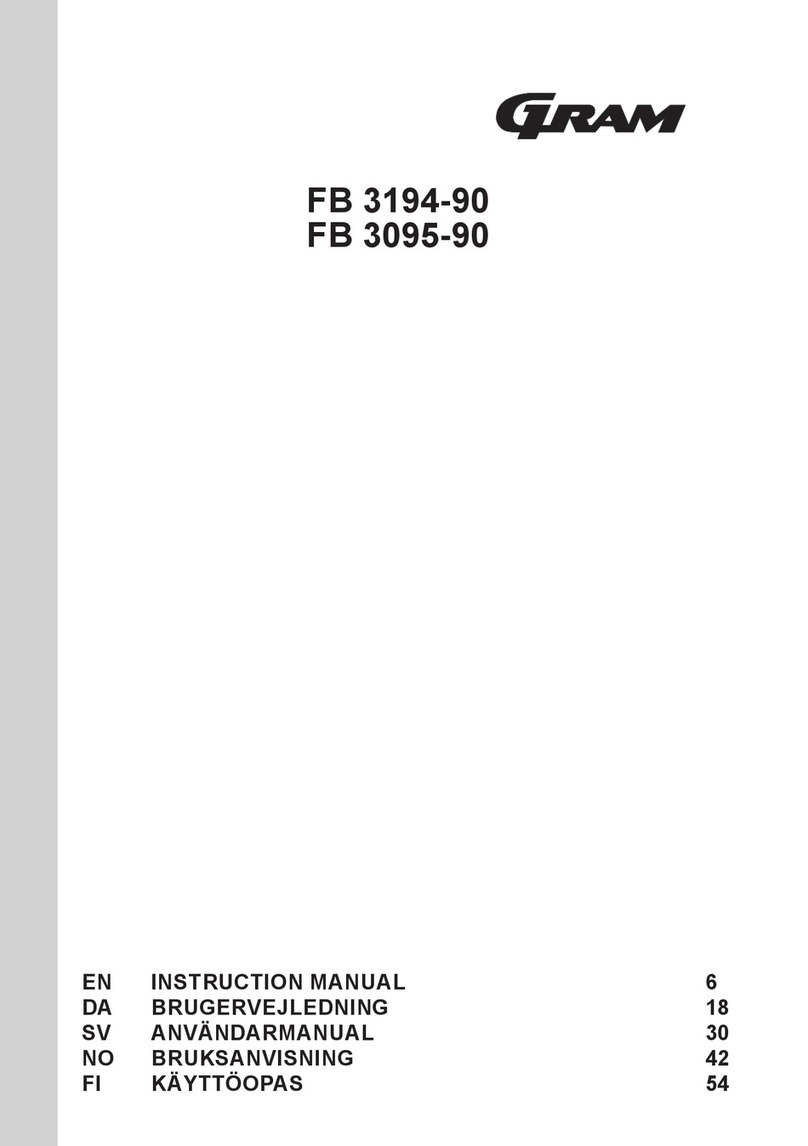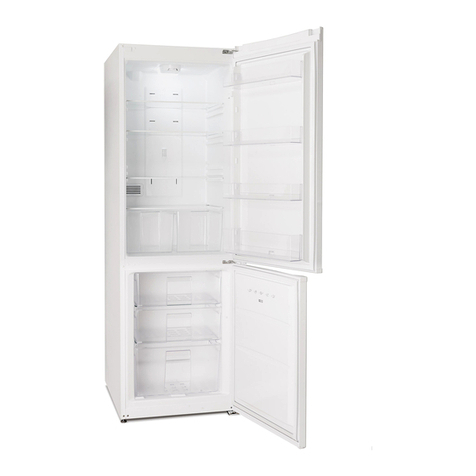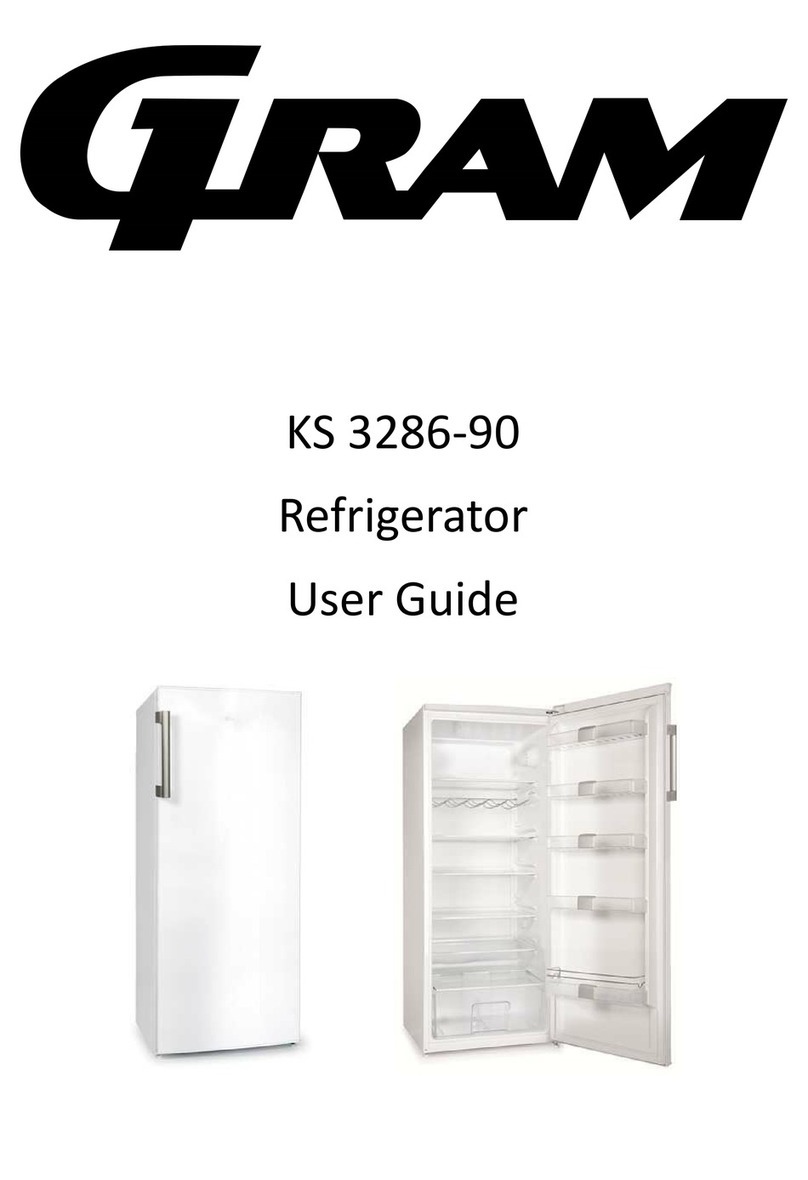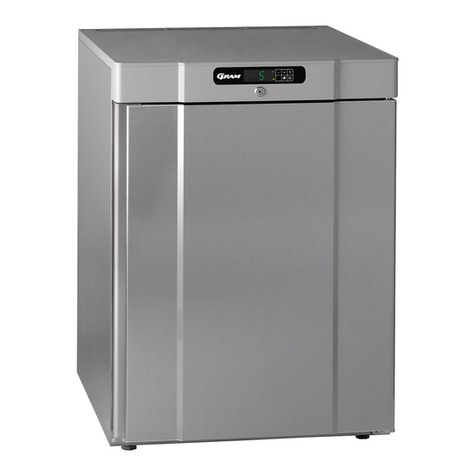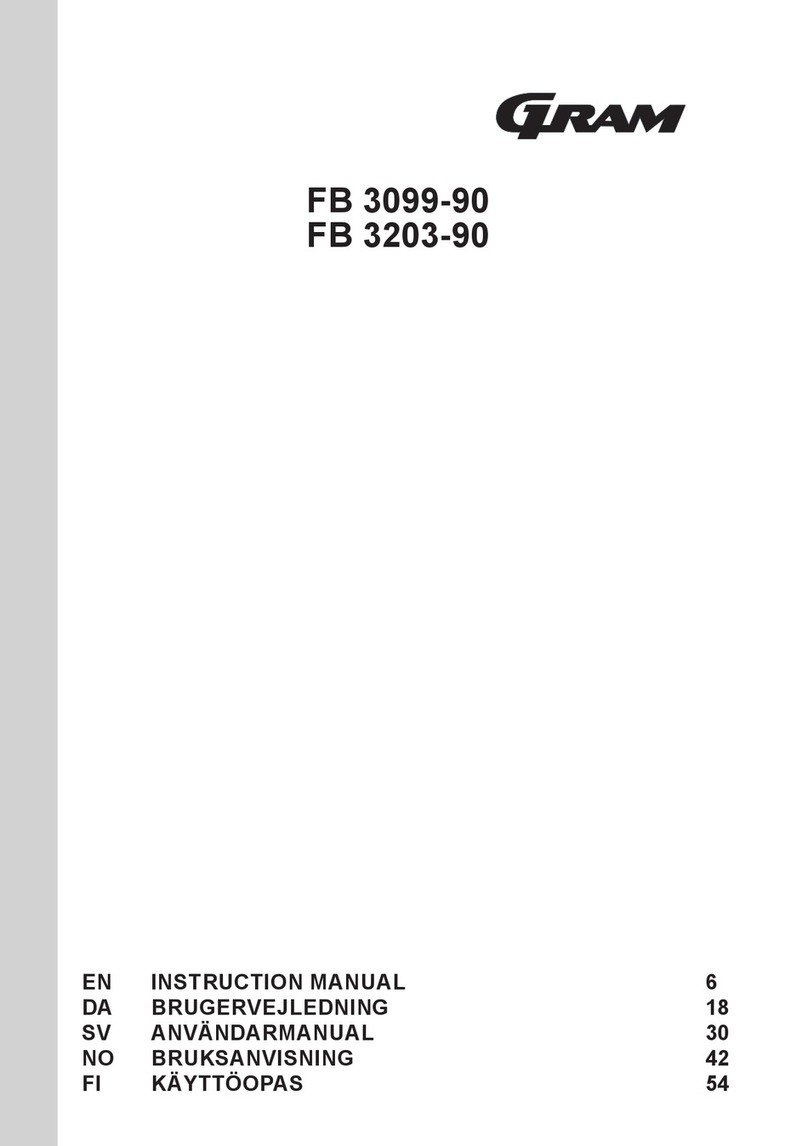EN
6
•Do not spray substancescontaining
inflammable gases such as propane
gas near the refrigerator to avoid fire
and explosion risk.
•Never place containers filled with
water on top of the refrigerator; in the
event of spillages, this may cause
electric shock or fire.
•Do not overload the refrigerator with
food. If overloaded, thefood items
may fall downand hurt you and
damage refrigerator when you open
the door.
•Never place objects on top of the
refrigerator; otherwise, these objects
may fall downwhen you open or
close the refrigerator's door.
•As they require a precise temperature,
vaccines, heat-sensitive medicine and
scientific materialsand etc. should not
be kept in the refrigerator.
•If not to be used for a long time,
refrigerator should be unplugged. A
possible problem in power cable may
cause fire.
•The plug's tip should be cleaned
regularly with a dry cloth; otherwise, it
may causefire.
•Refrigerator may move if adjustable
legs are not properly secured on the
floor. Properly securing adjustable
legs on the floor can prevent the
refrigerator to move.
•When carrying the refrigerator, do not
hold it from door handle. Otherwise, it
may be snapped.
•When you have to placeyour product
next toanother refrigerator or freezer,
the distance between devices should
be at least 8cm. Otherwise, adjacent
side walls may be humidified.
Child safety
•If the door has a lock, the key should
be kept away from reach of children.
•Children must be supervised to
prevent themfrom tamperingwith the
product.
Compliance with the AEEE
Regulation and Disposing of
the Waste Product
This product does not contain harmful
and forbidden materials described
in the "Regulation on the Control of
the Waste Electrical and Electronic
Equipment" issued by the T.R. Ministry
of Environment and City Planning.
Complies with the AEEE Regulation.
This product has been
manufactured with high
quality parts and materials
which can be reused and
are suitable for recycling.
Therefore, do not dispose
the product with normal
domestic waste at the end of its service
life. Take it to a collection point for the
recycling of electrical and electronic
equipment. Please consult your local
authorities to learn the nearest collection
point. Help protect the environment
and natural resources by recycling used
products. For children's safety, cut the
power cable and break the locking
mechanism of the door, if any, so that it
will be non-functional before disposing
of the product.
